8 minute read
Or, you can listen to the full conversation on The Wild Cornwall Podcast, Spotify, or Apple Podcasts,
Rewilding Helman Tor. Image by Lisa Made It
8 minute read
Or, you can listen to the full conversation on The Wild Cornwall Podcast, Spotify, or Apple Podcasts,
I’m the Mid-Cornwall Reserves Manager, so I look after all our reserves in the middle of Cornwall, which is 25 in total. Helman Tor, where we are today, is the northern extent of my range – and it’s our largest reserve. It’s just under 300 hectares.
Yep. It certainly is a challenge as they’re geographically quite spread out. Like anything in life, you need to prioritise the jobs as they come up – and you need to be reactive sometimes, if stock have broken out, for example. Helman Tor takes a fair chunk of our time, as it’s so much larger than the rest – in fact, it’s the same size as my other 24 reserves put together.
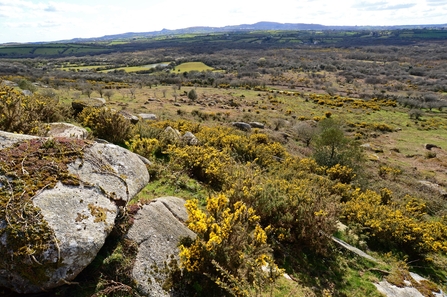
Last year we purchased Creney Farm. We took over ownership in May this year. It’s about one hundred acres (around 40 hectares) of new land and is bounded on three sides by the Red Moor part of this nature reserve, so it was like the missing piece of the jigsaw for the site!
Helman Tor is special because it’s almost continuous landholdings, so you get less edge effects and you can do more exciting things – and that’s what we’re looking to achieve in the future.
The land was an organic farm, so it’s not bad as a starting point… but it was intensively farmed land. There are challenges in the sense that it has been modified, so we’re trying to get that back to a more natural state. So, for example, we’ll reverse some of the drainage that’s happened over the years and we’ll try to strip and remove the nutrient levels, so that more natural plant communities can start to establish themselves. That will take years: it’s a gradual process that we have to go through – but once we get there, it’s going to be absolutely fantastic!
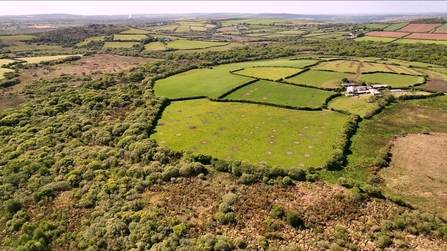
The landscape of Creney Farm and Helman Tor, Image by Ebb & Flow Media
It’s the range of habitats, which is the reason it’s so good for biodiversity. There’s a real mosaic. We’ve got willow carr, which is a wet woodland, a primeval kind of woodland with lots of epiphytes (when plants grow on top of other plants, like mosses, lichens and ferns). We’ve then got oak woodland, with a hazel understory, which are great for hazel dormice. Then there’s the more open habitat, including Atlantic heathland (wet and dry heathland) and acid grassland mixed in there as well. And then there’s open water habitats. A huge range of different habitats and they host a whole variety of different wildlife!
We’ve been working with Christine, a local farmer, for many years now. She grazes her belted galloways here. It’s good to be able to work with local famers and they come to value the reserve. These are beef cattle and there’s a very high-quality product coming from them.
They’re helping with conservation! The job they’re doing is known as ‘variable defoliation’, which is a posh way of describing the way they go around and graze areas, leaving some long and others short. That increases the structural diversity: instead of everything being the same height and size, they create short sward areas that are good for basking snakes and invertebrates. Then they’ll leave some long areas too, which allows larger plants like scabious and climbing plants like vetches to thrive.
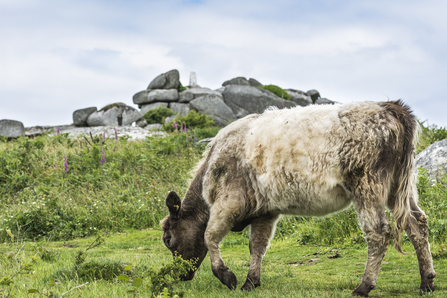
Belted Galloway Cattle with Helman Tor in the background. Image Ben Watkins
It's a balance to get the stocking numbers right. Too many and it would be short everywhere; too few and then we’d have habitats going through succession. In that case, we’d have oak woodlands spilling out, or too much scrubland, which would be at the cost of things like acid grassland or wet grassland or heathlands.
So the cattle help us try to strike a balance. They’re our pseudo-aurochs – an extinct bovine breed which used to be in the UK thousands of years ago. They would have been slightly bigger than these ‘Belties’ and would have had horns, but would have done a similar job.
That’s right. We used to have this very romanticised idea, based on the work of Oliver Rackham, of the ‘wild wood’: the belief that most of the UK was all oak woodland, but then humans came along and chopped it all down. There’s an element of truth to it – the UK would have been more wooded – but more recent thinking is that there would have been plenty of megafauna crashing through the undergrowth and creating glades, leading to a whole mosaic of habitats. Really, that’s what we’re trying to achieve on these sites: a balance of different habitats.
A site like Helman Tor that is so large is ideal, because it can hold that mosaic of habitats. On our smaller sites, you’d need a cow or two, half a pony, and a quarter of a pig! But here we can think about having mixed grazing and replicate those natural processes which have been lost.
Cows have this rasping way of eating – they wrap their tongue around the vegetation and then tear at it. What that does is leave a very uneven finish to the ground. That helps with the structural diversity.
If you compare that to native breed ponies, they have two rows of teeth, so they’re like scissors going around. They will nibble at scrub more than cows and have more malleable lips, so they can be more selective. The downside of ponies, of course, is that they can graze an area to absolutely nothing! So, getting the right stock numbers is very important.
We’re trying to work out the best way to move the livestock around. It sounds like a lovely idea to have them roaming free across the landscape. The problem is that – like us – they want to eat their favourite bits first, but we need them to move into the wetter, harder to reach areas. If they don’t, that will go through succession. With that in mind, we’ve been trialing digital ‘No Fence’ collars to help them stay where we want them to be grazing.
We’re looking into whether we could buy a herd of longhorn cows. The belted galloways are great, but the horns add a lot of value from a conservation point of view. It means they can manipulate the vegetation a little more: for example, they can break branches down to access things. They can also have a better effect on the ground.
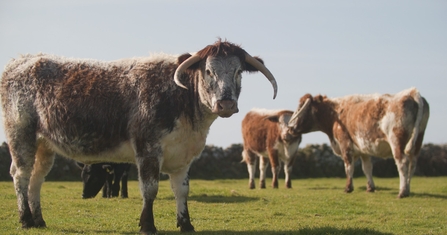
Longhorn cattle. Image by Nina Constable
Although we already own a herd of ponies, they’re pretty busy with Penhale Dunes and other sites, so we’d look at getting a herd for this site. We wouldn’t need many, probably only about half a dozen. They would move around, complementing the cattle grazing.
Find out more about pony grazing
Pigs replicate wild boar! Lots of people are asking us why we don’t simply introduce wild boar? Well, first because they can create havoc! It’s also a lot harder to manage them without those natural predators, so we’d struggle to control their numbers.
It’s easier then to have a native breed, like Tamworths or Cornish Blacks. They’re as close to wild boar as you can get, without it being a wild animal. The challenge we face is fencing them.
The role they play for conservation is in the rootling they do, which the other animals we’ve talked about can’t achieve. Their noses are like ploughs: they can go in and turn sods of earth. And the turning over of the soil creates germinating opportunities for a lot of annuals and it can really open up the ground. They can also knock back some of the more dominant plants, like bracken which can be a real pain.
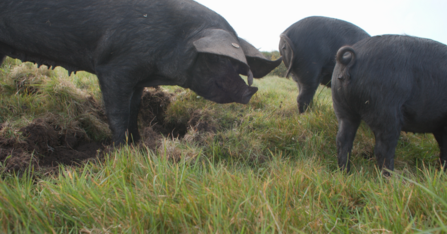
Cornish Black Pigs. Image by Nina Constable
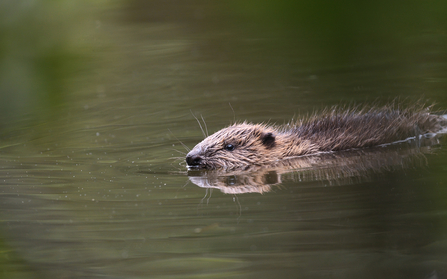
Young Cornish beaver, image by Adrian Langdon
If I had to grade my levels of excitement, then beavers would be right at the top! That’s because they are famously such amazing ecosystem engineers. They create habitats, like wetland pools, but they also can access parts of the site which we struggle to reach, doing the kind of work which is tough for humans to achieve.
We’re still waiting for the government to decide whether wild releases are allowed; in the meantime we’ve recruited a Beaver Officer to start the preparations to apply for a license. We’ve also started talking to local people to make sure we’ve taken people on the journey with us. It will be amazing if people can come to Helman Tor in the future and see beavers!